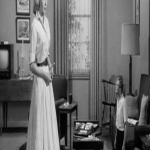Reaney – the yet to be resolved questions
Reaney – the yet to be resolved questions
 The case of Christine Reaney v. University Hospital of North Staffordshire NHS Trust (1) and Mid Staffordshire NHS Foundation Trust (2)[fusion_builder_container hundred_percent=”yes” overflow=”visible”][fusion_builder_row][fusion_builder_column type=”1_1″ background_position=”left top” background_color=”” border_size=”” border_color=”” border_style=”solid” spacing=”yes” background_image=”” background_repeat=”no-repeat” padding=”” margin_top=”0px” margin_bottom=”0px” class=”” id=”” animation_type=”” animation_speed=”0.3″ animation_direction=”left” hide_on_mobile=”no” center_content=”no” min_height=”none”][1] has now compromised on a largely pragmatic basis, reflecting both parties’ perception of the risks in proceeding. These risks were increased by Mr Justice Foskett’s understandable difficulty in considering how he should proceed on the remitted hearing after the decision of the Court of Appeal. This difficulty is reflected in his written Preliminary Judgment on remission in [2016] EWHC 1676 (QC) where the Judge discussed the Court of Appeal’s Judgment in [2015] EWCA Civ 119, allowing the appeal against Mr Justice Foskett’s initial Judgment in [2014] EWHC 3016 (QB). The Court of Appeal, whilst allowing the Defendant’s appeal on the most significant issue in the case, that is the legal identification of loss in the context of the claim, were not prepared to give any further illumination as to how this should be approached at the remitted hearing, notwithstanding requests from both parties. There are, thereafter, unresolved questions which are likely to be considered in forthcoming cases.
The case of Christine Reaney v. University Hospital of North Staffordshire NHS Trust (1) and Mid Staffordshire NHS Foundation Trust (2)[fusion_builder_container hundred_percent=”yes” overflow=”visible”][fusion_builder_row][fusion_builder_column type=”1_1″ background_position=”left top” background_color=”” border_size=”” border_color=”” border_style=”solid” spacing=”yes” background_image=”” background_repeat=”no-repeat” padding=”” margin_top=”0px” margin_bottom=”0px” class=”” id=”” animation_type=”” animation_speed=”0.3″ animation_direction=”left” hide_on_mobile=”no” center_content=”no” min_height=”none”][1] has now compromised on a largely pragmatic basis, reflecting both parties’ perception of the risks in proceeding. These risks were increased by Mr Justice Foskett’s understandable difficulty in considering how he should proceed on the remitted hearing after the decision of the Court of Appeal. This difficulty is reflected in his written Preliminary Judgment on remission in [2016] EWHC 1676 (QC) where the Judge discussed the Court of Appeal’s Judgment in [2015] EWCA Civ 119, allowing the appeal against Mr Justice Foskett’s initial Judgment in [2014] EWHC 3016 (QB). The Court of Appeal, whilst allowing the Defendant’s appeal on the most significant issue in the case, that is the legal identification of loss in the context of the claim, were not prepared to give any further illumination as to how this should be approached at the remitted hearing, notwithstanding requests from both parties. There are, thereafter, unresolved questions which are likely to be considered in forthcoming cases.
The facts of the case are well known and require little exposition by way of background. Christine Reaney had the misfortune at the age of 61, in 2008, to develop transverse myelitis, a rare constitutional inflammatory condition which damaged her spinal cord and rendered her paraplegic. Her disability from this illness, however, was substantially increased by the Defendants’ breach of duty in permitting the Claimant to develop bedsores and failing to treat them properly, so that she became septic. On Mr Justice Foskett’s findings in the first judgment, which were not appealed, the Defendants’ breach of duty made a substantial difference to the Claimant’s disability, in particular in terms of rendering her permanently bed-bound; whereas he found she would have enjoyed a much more substantial degree of independence to the extent of independent transfers had she not had her injury aggravated by the Defendants.
There was no doubt that the Claimant’s overall presentation would have entitled her to very substantial damages in terms of care, therapies, accommodation, etc. The issue at first instance was the extent to which the Judge in his assessment of damages should reflect the fact that the Defendants were only responsible for aggravating the Claimant’s disability, given that she would have been paraplegic in any event. The initial award made by Mr Justice Foskett, in practical terms, was equivalent to that which would have been made had the Defendants been responsible not only for the aggravation but also for the Claimant’s paraplegia.
- QUESTION 1: How is additional loss defined?
In one sense, both parties accepted at first instance that the Defendants should only be liable to the extent that they had caused additional loss to the Claimant. However, they argued that as a matter of law that this should be assessed in significantly different ways.
Notwithstanding Mr Justice Foskett’s protestations, it is suggested that the analogy of apples and pears is helpful. The Defendants’ case was that the Claimant’s loss should be assessed in the same way for both the loss resulting from the Claimant’s constitutional condition, and the loss caused by the Defendants breach; that is to assess the Claimant’s reasonable requirements arising from both. This would form the subject of an award of damages (apples with apples). This analysis would apply even if, as here, the Claimant would not be in a position to finance her reasonable requirements arising from her pre-existing needs.
On the Defendants’ argument as accepted by the Court of Appeal, the position of a constitutionally injured Claimant should be no different to that of a Claimant who has already suffered loss as a result of breach of duty but has not been effectively compensated in respect of that loss; Performance Cars Ltd v. Abraham [1962] 1 QB 33[2]. This important conclusion is somewhat submerged in Paragraphs 28 and 29 of the judgment but the implication is that the Court of Appeal endorsed the Defendants approach to identification of loss.
The Claimant’s argument at first instance was that the comparison should be between the actual factual situation likely to have resulted from the pre-existing injury (the “make do” position) with the Claimant’s current reasonable requirements for her overall disability (apples and pears).
It was realistically conceded by the Claimant in the Court of Appeal that the apples and pears analysis could not be sustained and that specifically the Claimant’s personal circumstances could not be taken into account so as to establish whether a loss had occurred as a matter of law.
That the happenstance of the Claimant’s impecuniosity can be taken into account in assessing whether a loss had occurred as a matter of law is not supported by any authority and could not reasonably represent a proposition of law. The Claimant conceded at first instance that if she had been able to finance the care package and accommodation required as a result of her paraplegia, she would not have suffered any loss as a result of the Defendants’ breach of duty. Such an approach could reasonably be objected to as it penalises those who have acquired wealth. But whilst wealth can be acquired fortuitously through inheritance or even a lottery win, the usual position is that wealth is acquired through talent and industry, and persons who achieve this could reasonably object if they were required to finance their own care programmes and accommodation needs. The common law does not traditionally penalise prudence and endeavor, for example, as is indicated by the non-deductibility of insurance monies.
Further, such an approach would be very difficult to work in practice. Whilst the position was easy to assess in relation to Mrs Reaney, given her very extensive reasonable requirements and relative impecuniosity, difficulty could arise in more borderline cases in assessing the Claimant’s actual worth and the extent to which the Claimant should be expected to finance their own care package and accommodation needs. For example, would the Claimant be required to exhaust his or her own life savings or would some surplus over these savings be required?
- QUESTION 2: What does “qualitatively different” mean?
The Court of Appeal considered, at paragraph 19:
“It was (rightly) common ground that if the Defendants’ negligence caused Mrs Reaney to have care and other needs which were substantially the same kind as her pre-existing needs, then the damage caused by the negligence was the additional needs. On the other hand, if the needs caused by the negligence were qualitatively different from her pre-existing needs, then those needs were caused in their entirety by the negligence.”
It will be appreciated that these are two complementary propositions: specifically that the needs will not be considered merely additional if they are qualitatively different to the Claimant’s pre-existing needs. In the Court of Appeal the Claimant attempted to argue that the current needs for Mrs Reaney were qualitatively different from those which would have arisen from paraplegia alone, relying in particular on the difficult decision of Mr Justice Edwards-Stuart in Sklair v. Haycock [2009] EWHC 3328 (QB)[3]. The Claimant’s argument in the Court of Appeal in Reaney was that there was evidence that the new needs were qualitatively different and therefore could be reflected in their entirety in the award of damages.
This was a difficult argument in the circumstances, given that this issue had not been explored, and was not the subject of submissions at the first instance hearing. Reference was made to suggestions that carers of different quality would now be required. This was dealt with very briefly in the evidence, and in practical terms it is difficult to envisage how there could be a meaningful difference in the quality of carers once the Claimant’s needs were those of a paraplegic. The Court of Appeal unsurprisingly considered that there was insufficient evidential basis for this submission to be advanced.
In the circumstances, this issue remains for further analysis in forthcoming cases, but on a proper understanding of the facts of Reaney it appears unlikely that this argument would have enjoyed any success, even if fully explored at first instance. The Court of Appeal helpfully analysed the Judgment in Sklair and essentially concluded that the Judge reached the right conclusion, but for the wrong reason. In Sklair the Claimant had pre-existing care needs resulting from Asperger’s syndrome. These needs were essentially of a supervisory nature. The Claimant was then injured seriously in a road traffic accident and required constant 24/7 care. The Judge assessed the damages on the basis of 24/7 care and took no account of the pre-existing care needs. In the Court of Appeal judgment in Reaney it was accepted the Judge was correct to do this, but because the 24/7 care needs could be considered as caused in their entirety by the Defendant’s breach of duty. The pre-existing care needs were qualitatively different; that is that they stood no basis for comparison with the care needs now required.
This analysis falls under the broad principle of res inter alios actos reflected in the older authority of Shearman v. Folland[4]. In that case, the Court of Appeal refused to deduct from the costs of an elderly Claimant requiring nursing care provision the costs of living in a hotel where she had resided before the injury. The Claimant would rather have lived in a hotel and the Court of Appeal considered that the Defendants had caused her to have to live in a nursing home, against her wishes. On the other hand, they indicated that had more direct comparisons been made, for example as to the provision of food in both the hotel and nursing home, then arguments as to loss could arise.
On the facts in Reaney, the care regime reasonably required from the pre-existing injury as compared with the care now required, even allowing for any dubious arguments as to the actual quality of care, could not be said to be qualitatively different, as properly understood. In practical terms, Mrs Reaney needed more care of the same type, but would have had substantially comparable care needs in any event.
- QUESTION 3: To what extent must the Claimant prove the likely future actual arrangements so as to quantify loss?
Given the compromise of the case, this issue was never explored in detail. On the facts of the case, it can be best illustrated by reference to the accommodation claim. On the basis of a proper understanding of additional loss, and there being no argument as to “qualitatively different”, the Claimant would undoubtedly have had reasonable requirements for single-storey accommodation arising out of her paraplegia, which should then be reflected in the assessment of loss. It could be argued that the Claimant’s accommodation requirements were increased as a result of the Defendant’s breach of duty, in particular through the need to provide sleeping accommodation for additional carers.
However, on the correct legal analysis, the Defendants would only be liable to the extent that they had caused these additional requirements, say a four bedroom bungalow as opposed to a three bedroom bungalow. The question would then arise as to whether the Defendants should be liable to pay the Claimant for this additional loss in circumstances in which by reason of the Claimant’s inability to finance the purchase of the three bedroom bungalow the loss would never occur in fact.
In this context, the separate requirements of proving reasonable requirements so as to constitute a loss as a matter of law, and factual proof of actual loss so as to form the basis of quantification, should not be conflated.
The Claimant sought to suggest that arguing that the actual arrangements should be proved was an attempt to revive the now discredited approach of suggesting that a Claimant must prove loss in terms of actual expenditure. This approach was rejected in Donnelly v. Joyce [1974] QB 454[5] and subsequent cases. It is now accepted that loss can be proved without the need to prove actual expenditure, as evidenced in awards for gratuitous care regimes. However, these authorities do not go so far as absolving the Claimant of proving a factual basis of loss.
The alternative argument was the proposition that a Claimant can expend his or her damages as he or she wishes. This proposition is substantially derived from claims for property damage where it is accepted the Claimant does not have to prove repair or exact replacement of a damaged chattel. However, in this context the Claimant has already proved in factual terms the loss that is represented by the damage to the chattel. Such a proposition cannot be extended in a simplistic and overarching way to any claim for damages, in particular, for future loss.
This is notwithstanding the approach of Mr Justice Bean in Knaur v. Ministry of Justice [2014] EWHC 2513[6] where the Judge held that he could take this approach in relation to a future services claim. Instructively, he directed himself in accordance with the proposition that if a Rolls Royce is damaged, the Claimant is entitled to expend the damages represented by the costs of repair in such way as the Claimant wishes. However, as suggested above, this ignores the crucial distinction that damage is already proved in this case by reference to the physical damage to the Rolls Royce. There is in fact no authority beyond this which would suggest that a Claimant can establish a claim for future loss on a notional basis without any evidence as to the likely occurrence of the circumstances said to quantify the loss and then expend damages as thought fit.
If this was the case, then the Claimant could claim for accommodation needs even if the Claimant had no intention of moving house, or indeed even if the Claimant already had suitable accommodation. Such an approach would also be inconsistent with the line of authority in relation to the Claimant’s right to seek private medical treatment, but where Courts can take into account the likelihood of the Claimant in fact obtaining treatment privately as opposed to the NHS provision; most recently, XYZ v. Leeds Teaching Hospitals. In fact, the routine approach of a Judge assessing the likely future factual position is well illustrated in paragraph 18 of the Quantification Judgment where Mr Justice Foskett accepted that he could not award damages on the basis of the full care regime during the period whilst a move to new accommodation was pending.
- QUESTION 4: Why should the Claimant’s needs be assessed in such a radically different way in relation to “reasonable requirement” for loss in tort and under statutory provision, in particular Section 47 of the National Health Service and Community Care Act 1990?
This issue was only relevant obliquely in this case. However, it is a striking feature of the Judgment that Mr Justice Foskett considered that there could be very substantial and justifiable improvement in Mrs Reaney’s quality of life through the arrangements subject to the claim for damages. Nonetheless, if approached directly on the facts of the case, he would have considered that the Local Authority were not in any way in breach of their statutory obligations in providing a much lower value care package. This distinction is characteristically justified by reference to the statutory provisions, in particular the use of the word “needs”, the stretched financial position of Local Authorities and the policy difference in relation to a tortfeasor. All these arguments are questionable, in particular in the context of a claim against the NHS. Perhaps the most telling unresolved question from the Reaney case is therefore why this very marked disparity is really justified.
[1] Reaney v University Hospital of North Staffordshire NHS Trust [2016] EWHC 1676
[2] Performance Cars Ltd v. Abraham [1962] 1 QB 33
[3] Sklair v. Haycock [2009] EWHC 3328 (QB).
[4] Shearman v Folland (1950) 2 KB 43
[5] Donnelly v. Joyce [1974] QB 454
[6] Knaur v. Ministry of Justice [2014] EWHC 2513[/fusion_builder_column][/fusion_builder_row][/fusion_builder_container]


